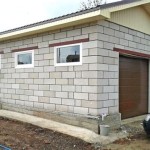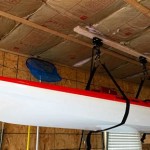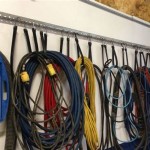Craftsman Garage Door Opener Problems: Troubleshooting and Solutions
Craftsman garage door openers, a staple in many homes, are known for their durability and reliability. However, like any mechanical and electronic device, they are prone to experiencing problems over time. Understanding the common issues that can arise with a Craftsman garage door opener is essential for homeowners to troubleshoot effectively and potentially avoid costly repairs. This article will delve into frequently encountered problems, their likely causes, and potential solutions.
Before attempting any repairs or troubleshooting, it is paramount to ensure the power to the garage door opener is disconnected. This safety precaution prevents accidental operation and potential injury during the diagnostic process. Furthermore, familiarize yourself with the owner's manual, which provides specific instructions for your model and can contain valuable troubleshooting tips. Always consult a qualified technician if you are uncomfortable or unsure about performing any repair work.
Door Not Opening or Closing Completely
One of the most common complaints associated with Craftsman garage door openers is the door failing to open or close fully. This issue can manifest in various ways, such as the door stopping partway, reversing direction immediately after starting, or refusing to move at all. Several factors can contribute to this problem, ranging from simple adjustments to more complex mechanical failures.
A primary cause to investigate is the limit switch settings. These switches, typically located on the garage door opener motor unit, control the distance the door travels during the opening and closing cycles. If the limit switches are improperly adjusted, the opener may perceive the door as having reached its limit before it actually has. To address this, consult the owner's manual for instructions on adjusting the up and down limit switches. Small incremental adjustments are recommended, testing the operation after each adjustment until the door opens and closes smoothly and completely.
Another potential cause is an obstruction in the path of the door. The safety sensors, located near the floor on either side of the door opening, are designed to detect obstructions and prevent the door from closing if anything is in the way. These sensors use an infrared beam to communicate with each other, and if the beam is interrupted, the opener will reverse direction. Check the sensors for any obstructions, such as debris, leaves, or even cobwebs. Ensure the sensors are properly aligned and clean the lenses with a soft cloth. Misaligned sensors can be a common culprit, often caused by bumps or minor shifts over time. If the sensors are blinking or displaying error codes, refer to the owner's manual for specific troubleshooting steps.
The spring system of the garage door itself can also contribute to incomplete opening or closing. Garage door springs are under immense tension and provide the necessary force to lift and lower the heavy door. If a spring is broken or weak, the opener may struggle to move the door, leading to incomplete operation or even complete failure. Inspect the springs for any signs of damage, such as breaks, gaps, or excessive rust. It is crucial to note that garage door spring replacement is a dangerous task and should only be performed by a qualified professional. Attempting to replace the springs yourself without the proper tools and knowledge can result in serious injury or death.
Finally, inspect the track system for any obstructions or damage. The rollers on the door move along these tracks, and if the tracks are bent, dented, or blocked, the door's movement can be restricted. Check for any loose hardware, such as bolts or screws, and tighten them as needed. Lubricating the tracks and rollers with a garage door lubricant can also improve the door's smoothness of operation.
Remote Control and Keypad Issues
Remote control and keypad malfunctions can be frustrating, preventing convenient access to the garage. These issues can range from the remote not working at all to intermittent operation or limited range. Troubleshooting these problems involves checking the batteries, reprogramming the devices, and inspecting the antenna.
The most common cause of remote control failure is dead or weak batteries. Replace the batteries in the remote with fresh ones and test again. Ensure the batteries are installed with the correct polarity. If the remote still does not work, try reprogramming it to the garage door opener. The procedure for reprogramming varies depending on the model, so consult the owner's manual for specific instructions. Typically, this involves pressing a "learn" button on the opener motor unit and then pressing a button on the remote. This process synchronizes the remote's signal with the opener.
If the remote or keypad has limited range, the antenna on the garage door opener may be the issue. The antenna receives the signal from the remote, and if it is damaged, loose, or obstructed, the range can be significantly reduced. Check the antenna to ensure it is securely connected and free from any obstructions. Consider repositioning the antenna or extending it to improve its reception. In some cases, interference from other electronic devices can also affect the remote's range. Try moving any nearby devices, such as wireless routers or other garage accessories, to see if it improves the signal.
For keypad issues, ensure the keypad is clean and free from any debris. Dirt or moisture can interfere with the buttons' functionality. Try resetting the keypad by removing and reinserting the batteries. If the keypad is still not working, it may need to be reprogrammed to the opener. Refer to the owner's manual for specific instructions on reprogramming the keypad.
Also, consider the potential for interference. Certain types of lighting, particularly LED bulbs, can sometimes interfere with the signal between the remote or keypad and the garage door opener. Try switching to different bulbs to see if it resolves the issue.
Garage Door Opener Making Noise
Unusual noises emanating from the garage door opener can be indicative of underlying mechanical problems. Grinding, squealing, or clicking sounds should not be ignored, as they can signify wear and tear, lack of lubrication, or damaged components. Identifying the source and nature of the noise is crucial for effective troubleshooting.
One of the most frequent causes of noisy operation is a lack of lubrication. The moving parts of the garage door opener, such as the chain or belt, the rollers, and the hinges, require regular lubrication to function smoothly and quietly. Apply a garage door lubricant, specifically designed for this purpose, to these components. Avoid using WD-40 or other general-purpose lubricants, as they can attract dust and debris, exacerbating the problem. Lubricate the chain or belt, the rollers where they contact the tracks, and the hinges on the door panels.
A grinding noise often indicates worn gears inside the motor unit. The gears are responsible for transferring power from the motor to the chain or belt, and if they are worn or damaged, they can produce a loud grinding sound. Replacing the gears is a common repair, and replacement gear kits are often available. However, this repair requires some mechanical skill and should be performed by a qualified technician if you are not comfortable with it. Ignoring this grinding noise can lead to complete failure of the motor unit.
Squealing noises can be caused by a dry or worn belt or chain. Applying lubricant to the belt or chain can often resolve this issue. However, if the belt or chain is visibly worn or damaged, it may need to be replaced. Check the tension of the belt or chain, as excessive slack can also contribute to noise. The owner's manual will provide instructions on how to adjust the tension.
Clicking sounds, particularly from the motor unit, can sometimes indicate a problem with the circuit board or other electrical components. This type of issue often requires professional diagnosis and repair. Attempting to repair the circuit board yourself can be dangerous and may cause further damage.
Inspect the entire garage door system, including the hinges, rollers, and tracks, for any signs of wear or damage. Loose or damaged components can also contribute to noise. Tighten any loose hardware and replace any damaged parts as needed.
Addressing these common Craftsman garage door opener problems promptly and effectively can extend the lifespan of the opener, ensure reliable operation, and prevent more costly repairs down the line. Regular maintenance, including lubrication and visual inspections, is crucial for preventing these issues from arising in the first place.

Craftsman Garage Door Opener Repair

Garage Door Won T Open Or Close Force Adjustments

The Most Common Garage Door Opener Problems And Their Troubleshooting Phoenician Doors Inc

How To Fix A Garage Door Opener That Won T Close The Lights Blink 10 Times

How To Fix A Garage Door Opener That Won T Open The Remotes Don Work

Garage Door Opener Repair And Troubleshoting

Craftsman Garage Door Opens But Won T Close Not Closing Fix Replace Main Circuit Board

Garage Door Opener Doesn T Work Wall Control Troubleshooting

A Guide To Troubleshooting Common Garage Door Problems Phoenician Doors Inc

Craftsman 1 2 Hp Chain Drive Garage Door Opener At Com
Related Posts








